#tactical urban planning intervention
Photo
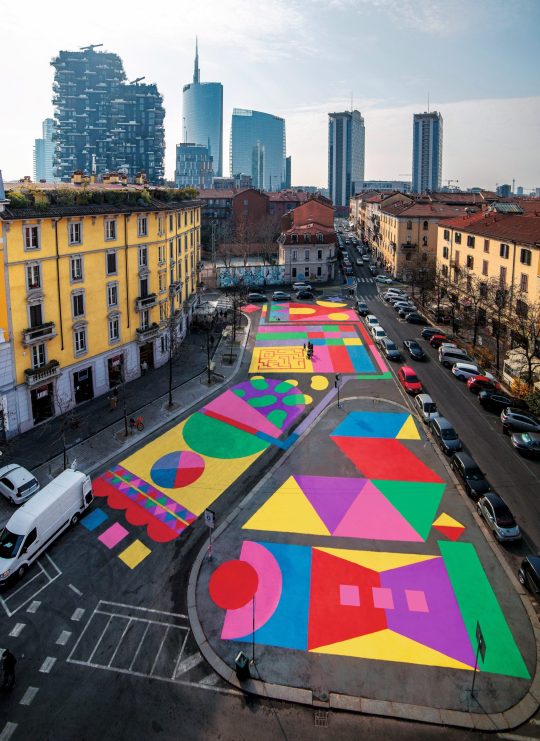
Camilla Falsini, “Tactical Urban Planning Intervention” (2020) in Milan, Italy. Photo by Jungle Agency
A New Book Repaints the Legacy of Street Art by Spotlighting Women Leading the Genre
Women Street Artists spotlights the diverse practices of 24 graffiti and mural artists hailing from around the globe who work in a variety of styles.
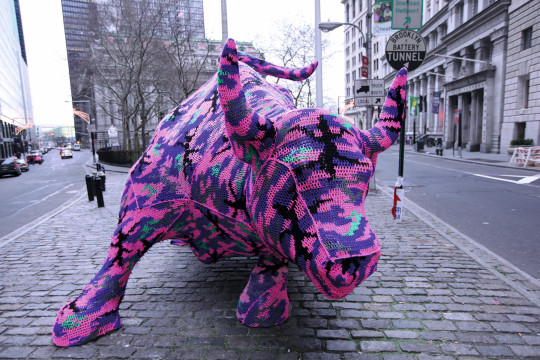
Olek, “Charging Bull” (2010), Wall Street, New York City
#women street artists#street artists#artist#art#mural#graffiti#female street artist#non-fiction book#art book#camilla falsini#milan#italy#jungle agency#photographer#tactical urban planning intervention#olek#charging bull#wall street#new york city
1 note
·
View note
Text
The city is where it’s at. Most of the human world lives in cities. Even so, it doesn’t feel like cities are necessarily made for their citizens. From low walkability to hostile architecture to prolonged development, the design isn’t very human. This isn’t even getting into how this impacts the environment and animals. This comes from bureaucracy-laden planning and design, being imparted from the top down. Approaching the creation of spaces for people without those people being involved leads to a focus on capital holders and what they want. If the conversation is between corporations/developers, municipalities, and citizens, citizens are the most important but least considered group in this conversation. That’s why we have shitty cities, rampant with inequity, unsustainability, and destitution.
That all probably sounds pretty bad. Thankfully, the citizen group has the power to come together and make changes with the resources they have available, creating a more liberatory, solarpunk future. This is where tactical urbanism comes in.
“Tactical Urbanism?”
Simply put, tactical urbanism is a grassroots-driven urban planning methodology that centers on DIY solutions and interventions. Instead of waiting for the city to act on a project, the community uses available resources to improve their community’s livability. This bottom-up orientation allows for iteration and experimentation to solve traffic issues, low numbers of green spaces, or general safety. These low-cost, DIY approaches can show interest in certain types of developments, encouraging long-lasting positive developments for the community.
Tactical urbanism can manifest as parklets, extending sidewalks and crosswalks, bike lanes, public art installations, seed bombing, outdoor seating, or more. It’s people imagining what they wish their city/community had and just going out and making it happen. These can be quick to implement, and even quicker to remove or modify as needed. This essentially allows for live pilots/prototypes of initiatives, where people can actually use the emergent infrastructure, encouraging longer-term solutions.
Tactical Urbanism x Solarpunk x Liberation
This methodology fits in well with the DIY ethos and grassroots-centric focus of solarpunk and liberatory movements. Solarpunk is all about imagining the futures that we want to see, full of equity, love, and harmony. Liberatory practices are the approaches that can bring the imagined into reality. As you can probably gather, tactical urbanism is a way to take action toward these goals, creating community-driven change. This allows for community resilience to be built and gives people a sense of ownership over the commons, creating a new world in the current one. It’s like a tiny revolution in the hearts and minds of those who participate.
With a tactical urbanism lens, a community could create community gardens or food forests on vacant/underutilized land. This space could allow for building relationships with each other and the land, grow collective self-sufficiencies, and inspire more change in the community. Not to mention the benefits this provides to the local food system.
How to Start Participating in Tactical Urbanism?
Participating in tactical urbanism can be as simple as identifying a problem in your local community and coming up with a creative solution. Here are some steps to get started:
Hopefully, after reading this you’re jazzed about the little changes that lead to big changes you can make in your own community. If you’re looking to start something, here is a very simple overview for you to think about:
Inspiration → Look for an issue that you could solve using tactical urbanism. Some examples could be a lack of sidewalks, poor access to food, or the myriad of other issues your area has. Figure out the one you’re interested in and start doing research. Find out of similar issues have been solved through tactical urbanism and try to understand what community members think and want as possible responses to the issue.
Ideation → Synthesize what you’ve learned into more concrete ideas on how to respond to the issue. Here you’ll ideate with the community and decide what directions to move forward in.
Implementation → Create a full plan for the project, including what will be needed (budget, resources, timelines etc). Get a team together and implement the project. Celebrate.
Postmortem → Track the success of the project as it continues to be out in the real world. Always gather feedback from the community and compile findings into digestible formats, so you can present them to people if necessary.
Tactical urbanism is cool because it gives us a powerful tool for creating more equitable and sustainable cities. By empowering communities to take action and make changes in their own neighborhoods, we can begin to build a better world, one DIY project at a time. While the challenges facing urban areas are significant, tactical urbanism offers a way forward that is accessible, inclusive, and empowering. You can literally start now. Identify an issue in your community, gather some friends, and begin creating the future you want to see. Together, we can build a more livable, equitable, and solarpunk world.
99 notes
·
View notes
Text
The Battle Against Pests: Halesowen's Trusted Extermination Services
Introduction
Halesowen, nestled in the picturesque landscape of England's West Midlands, faces a persistent challenge in battling various pests that threaten the tranquility and well-being of its residents. From rodents and insects to birds and wildlife, pests can cause nuisance, health risks, and property damage if left unaddressed. In this guide, we delve into the significance of pest control in Halesowen and the trusted extermination services available to combat these persistent invaders.

Understanding the Pest Landscape in Halesowen
Before devising strategies to combat pests, it's crucial to grasp the diverse array of pests that plague Halesowen. The region contends with various types of pests, including:
Rodents: Rats and mice are ubiquitous in urban and rural areas, seeking shelter and sustenance in homes, businesses, and agricultural settings.
Insects: Cockroaches, ants, bed bugs, and fleas are common insect pests that thrive in warm and humid environments, infesting buildings and causing discomfort and health hazards.
Birds: Pigeons, seagulls, and starlings are notorious for roosting on buildings and structures, creating sanitation issues and damaging property.
Wildlife: Foxes, squirrels, and rabbits can cause damage to gardens, landscaping, and property, requiring humane and effective management strategies.
Factors such as urbanization, climate, and food availability contribute to the proliferation of pests in Halesowen. Understanding the behavior and habitats of these pests is essential for developing effective control measures.
The Role of Trusted Extermination Services
Trusted extermination services play a pivotal role in the battle against pests in Halesowen. These professional pest control companies offer expertise, experience, and specialized techniques to effectively manage and eradicate pest infestations. The significance of trusted extermination services lies in several key factors:
Expertise: Trained technicians possess the knowledge and skills to identify pest species, assess infestation severity, and devise tailored treatment plans.
Safety: Extermination services prioritize the safety of clients, technicians, and the environment by employing safe and pest control halesowen approvedpest control methods and products.
Efficiency: With access to specialized equipment and resources, extermination services can swiftly and effectively eliminate pest infestations, minimizing disruption and damage.
Preventive Measures: Beyond eradication, extermination services offer recommendations and preventive measures to deter future infestations and maintain pest-free environments.
Trusted extermination services serve as valuable allies in the ongoing battle against pests, providing peace of mind and protection for residents and businesses in Halesowen.
Integrated Pest Management (IPM)
Integrated Pest Management (IPM) serves as the cornerstone of effective pest control in Halesowen. This holistic approach emphasizes prevention, monitoring, and control to minimize reliance on chemical pesticides and promote sustainable pest management practices. Key components of IPM include:
Identification: Accurate identification of pest species and assessment of infestation levels are essential for determining appropriate control measures.
Prevention: Implementing preventive measures such as sealing entry points, maintaining cleanliness, and eliminating food and water sources can deter pests from infesting properties.
Monitoring: Regular inspection and monitoring allow early detection of pest activity, enabling prompt intervention to prevent infestations from escalating.
Control Strategies: IPM integrates a combination of tactics, including biological control, habitat modification, and targeted pesticide application, to manage pest populations effectively.
By adopting an IPM approach, Halesowen can achieve sustainable pest control while minimizing environmental impact and promoting public health and safety.
Biological Control
Biological control offers an eco-friendly alternative to chemical pesticides, leveraging natural predators, parasites, and pathogens to regulate pest populations. This approach offers several advantages:
Environmental Sustainability: Biological control agents pose minimal risk to non-target organisms and ecosystems compared to chemical pesticides.
Targeted Control: Specific natural enemies can be introduced or encouraged to target particular pest species, minimizing collateral damage.
Long-Term Effectiveness: Biological control methods can be sustainable and self-perpetuating, providing lasting pest management solutions.
Examples of biological control in Halesowen include the introduction of predatory insects to control aphids in gardens or the use of bacteria to suppress mosquito larvae in stagnant water bodies.
Chemical Control
While chemical pesticides should be used judiciously due to their potential environmental and health risks, they remain a valuable tool in pest management when applied responsibly. Modern pesticides are formulated to target specific pests while minimizing harm to beneficial organisms and the environment. Key considerations for safe and effective chemical control include:
Product Selection: Choosing pesticides that are approved for the target pest and application site, and following label instructions rigorously.
Application Techniques: Employing precise application methods to minimize drift and off-target exposure.
Environmental Impact: Considering the potential impact of pesticides on non-target organisms, water sources, and ecosystems.
Integrated with other control measures, such as monitoring and prevention, chemical control can help address severe pest infestations and safeguard public health.
Cultural Control
Cultural control methods involve modifying human activities and practices to deter pests. This approach leverages factors such as sanitation, landscaping, and building design to create an inhospitable environment for pests. Key cultural control strategies include:
Sanitation: Proper waste management, removal of food sources, and regular cleaning can deprive pests of essential resources, discouraging infestations.
Landscaping Practices: Selecting pest-resistant plants, maintaining proper spacing, and reducing harborage sites can minimize pest habitats in outdoor areas.
Structural Modifications: Sealing cracks, installing screens, and improving ventilation can prevent pest entry into buildings and reduce hiding places.
By incorporating cultural control practices into daily routines and urban planning, Halesowen can create an environment that is less conducive to pest proliferation.
Conclusion
The battle against pests in Halesowen requires a multifaceted approach that integrates various strategies and engages stakeholders at all levels. Trusted extermination services, supported by Integrated Pest Management principles, play a vital role in effectively managing and eradicating pest infestations. By leveraging biological, chemical, and cultural control methods, Halesowen can achieve sustainable pest control while safeguarding public health and preserving the environment. With the support of trusted extermination services and proactive community involvement, Halesowen can conquer its pest problems and foster a healthier, safer, and more resilient community for all.
0 notes
Text
Studio Visit: LAU
We have been already discovering the purpose of the urban acupuncture regeneration method for public spaces, that uses small actions for the interactions between dwellers and in such way improve the quality of the community life. As a design tactic it promotes an urban regeneration at a local level, within simple and non expensive interventions in public space to have a transformative impact. Andreea Cutieru explains urban acupunctures as "an alternative to conventional development processes, as they represent an adaptable framework for urban renewal, where highly focused and targeted initiatives help regenerate neglected spaces, incrementally deploy urban strategies, or consolidate the social infrastructure of a city."

An intervention with a cycle path along the Avenida 8 Norte in Tapachula, Chiapas by LAU. Photo © Fernando Díaz Vidaurri
In 2021 we have presented Daniel Díaz Vidaurri in an interview, where he explains about his collaborations in Europe and how he could adapt urban acupuncture methodologies to communities in Mexico. Together with Fernanda Tejeda Torres they founded the Urban Acupuncture Laboratory (Laboratorio de Acupuntura Urbana or LAU), an initiative focused on design, sustainability and urban planning to foster social inclusion.
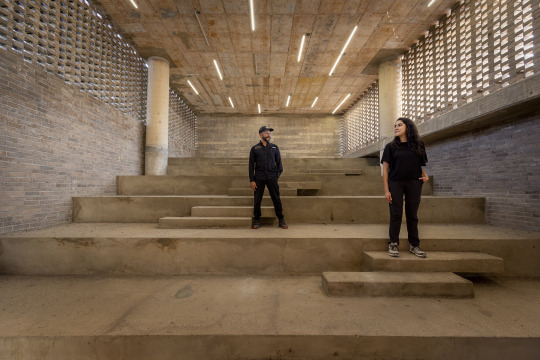
Daniel Díaz Vidaurri and Fernanda Tejeda Torres formed LAU. Photo © Fernando Díaz Vidaurri
LAU is just one of some Mexican offices (which we will present in the following months) that took a part in the Urban Improvement Program, part of the new government and initiative of the Ministry for Agrarian, Territorial and Urban Development.
Román Guillermo Meyer Falcón, the minister at this department, states that the project within "built architectures for communities have improved the perception of security in the communities and provided conditions for the creation of social ties and the strengthening of social cohesion. In favour of social justice, the program focuses on neighbourhood improvement interventions in Chiapas, Oaxaca, Tabasco and Veracruz, to in such way create public spaces of the most marginalized communities and raise their quality of life."

The proposal of an Urban Acupuncture by LAU for the Cedar market of Comitán de Dominguez.
The program focuses on the revitalization of urban areas through the improvement of infrastructure, public spaces and basic services, with the aim of boosting the socioeconomic development of local communities and promoting urban equity. Through the program many offices (as well LAU) collaborated with municipal authorities, civil organizations and the community in general to identify the priority needs of each area and design interventions that comprehensively respond to these needs.


A restructuration of a neglected area into a sport centre for kids and teenagers by LAU in La Cebadilla in Tapachula, Chiapas. Photo © SEDATU
In four years of hard work the Urban Improvement Program has developed actions in 25 Mexican states and 135 municipalities with 931 works, 38,000 actions and more than eighty urban and metropolitan and territorial planning plans or programs, among others. All of them have directly influenced life of millions of dwellers with democratisation of the access to services, but also within the creation of a new sustainable development of the common spaces. Within such an initiative, offering the opportunity to create community spaces is possible to influence the reduction of crime, drug abuse among youngsters and the stronger integration of urban and rural population in creation of such spaces. Community spaces enable as well a strong support for indigenous communities and allow them to assume a new commitment to the protection of the biodiversity and sustainable land use.
From Small To XXL Urban Acupunctures
The approach used at the LAU includes aspects such as accessibility, safety, environmental sustainability and the promotion of citizen participation. With such a program the new government in Mexico have managed to transform neighbourhoods, generating positive impacts on the quality of life of the inhabitants, promoting a sense of belonging and contributing to the comprehensive development of cities. However, there is always the same approach for urban acupunctures, from small to XXL scale, that always connects space with the communities.



Renovation of the park in Barrio Tikal, Comitan de Dominguez by LAU. Photo © SEDATU
The renovation of the park in Tikal for example improve the infrastructure within the promotion of the recreation of the population in the neighborghood. The project addresses, among others, the gender equity and safety, with the inclusion of spacious, illuminated environments that allow free access to space, but also reduces the incidence of crime and drug use among youngsters.
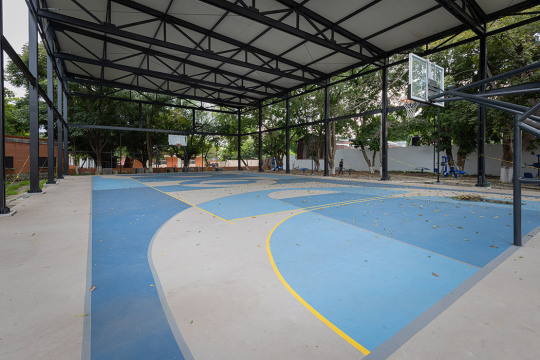
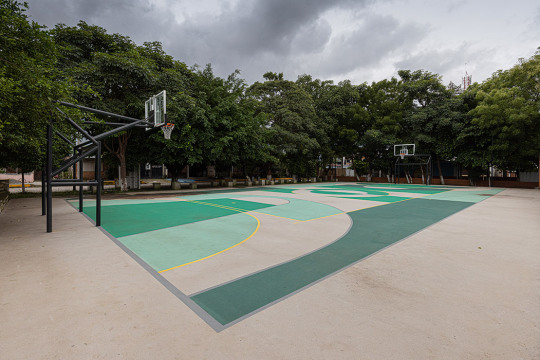
The transformation of the neglected park in San Angel del Pedregal in Tapachula, Chiapas into a playground by LAU. Photo © Fernando Díaz Vidaurri
The bigger, more strategic projects are suggesting architectural design strategies such as integration of endemic plant species, use of pavements that allow water infiltration into the soil, division of sanitary and rainwater networks, use of clean technologies, among others, public policy against climate change.
As such, the Community development center in Tapachula represent a part of a broad strategy to support the development of capacities and opportunities of the population, which contributes to the transformation of nearby colonies and peri-urban areas into safer, more productive and habitable places. The project promotes social integration, community development, while coexistence and collective identity are strengthened through access to services such as basic medical care, mental health, social work, training for work, sport and recreation, care for minors, from the infant level to the preschool level, direct food aid and social work.



Community development center by LAU in Tapachula, Chiapas. Photo © Fernando Díaz Vidaurri
The Community Development Center in Antiguo Rastro Municipal provides the community with a safe space of free access where activities on art, trade workshops, exhibitions of local artists, music, indigenous language classes, customs can be developed and encouraged by users to adapt the space for this, create a community that is proud of its roots, customs and can expose and represent it freely in this architectural complex where by knowing the transformation of use and history so reach more people with art and culture and generate a better quality of life without social differences, race, religion or customs.
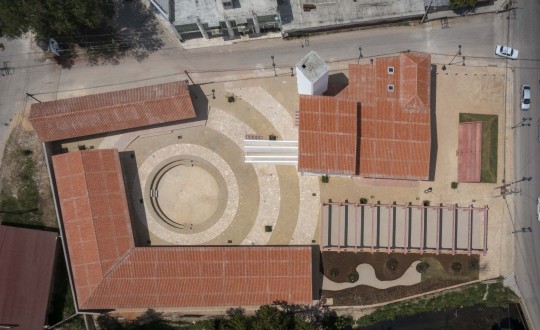
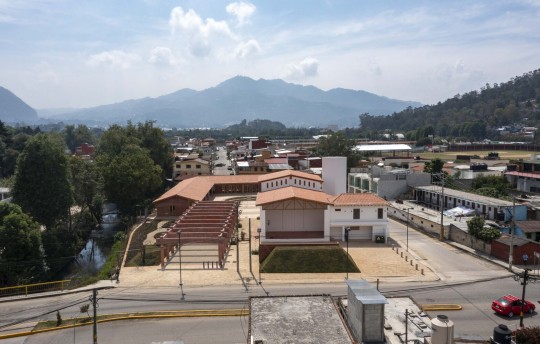

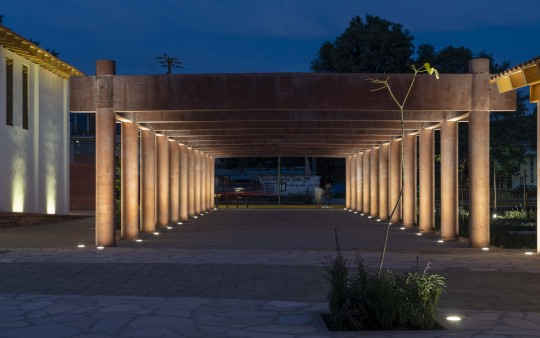

The Community Development Center in Antiguo Rastro Municipal. Photo © Jaime Navarro
1 note
·
View note
Text
What are the lessons from Paris and Chicago that Cincinnati’s neighborhoods can emulate?
Between 1800 and 1850, the population of Paris doubled, becoming over 1 million. Many health and social problems emerged such as overcrowded spaces, narrow streets, lack of air and light, and the quick spread of disease epidemics.
Haussmann’s plan had 4 guiding principles to combat the hardships of an overcrowded Paris:
Easier access in neighborhoods
Improved sanitation
Creating large boulevards
Facilitating circulation to and from the railway station by penetrating lines straight to the centers of commerce
Through Haussmann’s plan, better quality buildings were constructed, disease decreased, traffic improved, and the quality of life improved.
Another City, Chicago made major changes for the improvement of its quality. Part of the plan for Chicago was the connection of parks. Structures such as the Emerald Necklace connected parkways and boulevards that would link the region’s great open spaces.
Cincinnati is a well populated and traffic dense area, especially in the collegial neighborhood of CUF. Utilizing methods like making neighborhoods more accessible and great open parks could improve the quality of life here and make the greatest aspects of this city shine through.
CUF, UC, and Clifton
CUF is the academic heart of the city, having the main campus of the University of Cincinnati inside it. It is because of this that thousands of people from all over the tri-state area come to this one location, frequently making it congested and unsafe. To limit the amount of congestion caused by these events we could use Haussmann’s first principle. The principle states that we should make it easier to access on days of celebration to large buildings and landmarks.

Tactical Urbanism and Haussmannism
Being that the context of Cincinnati is much different than that of Paris, this first principle of Haussman’s design would have to be implemented in a more unique way, one that better serves the needs of the university and the surrounding neighborhood. We believe that the solution lies in the periodic use of a “tactical urbanism”. In times of low traffic, the road space can be reclaimed for the pedestrians of CUF, and in times of high traffic, this same space adopts the characteristics of Haussmann’s Boulevard’s, bringing many motorists to one location.
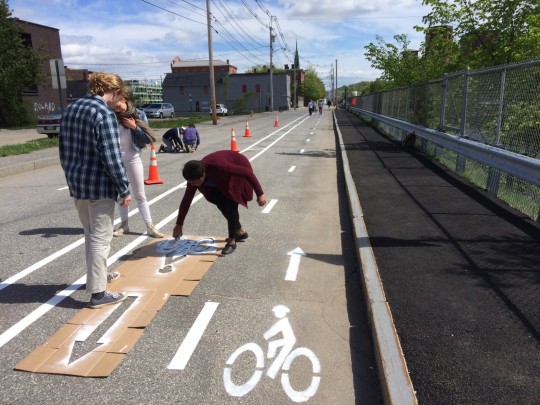
Paris of the River Valley
CUF could also be reinvigorated with the development of a network of parks, not too dissimilar from Daniel Burnham’s “Emerald Necklace” concept for his plan of Chicago. Though it would be more of a net than a necklace, and network of pathways that connect Burnett Woods with other parks around Cincinnati will help improve the well-being of CUF residents and UC alumni.

Debate Question:
Knowing that Cincinnati is very hilly, but could use some alternative methods of transportation, how could the city and its neighborhoods best implement infrastructure for cyclists?
March to Matchday- Jimmy & Dan from No Other Pod Preview Sporting KC (cincinnatisoccertalk.com)
0 notes
Text
Childhood Obesity: Intervention Tactics Advocated by Dr. Temo Waqanivalu
Understanding the gravity of childhood obesity is crucial for any health care professional, policymaker, or practitioner involved in the well-being of the next generation. Dr. Temo Waqanivalu, a renowned figure in the realm of public health, emphasises the importance of tackling this issue with a multi-pronged strategy. Here’s an insightful exploration into the approaches recommended by Dr. Waqanivalu to address this escalating concern.
Cultivating Nutritional Knowledge
Foremost, imparting nutritional knowledge at an early age is instrumental. Dr. Waqanivalu recommends interactive and engaging methods to teach children about the importance of balanced eating habits.
Facilitate school programs where nutritionists explain food groups through fun activities.
Introduce practical sessions on meal preparation that highlight healthy ingredients.
Encourage school gardens where children can grow and learn about wholesome foods.
Fostering Active Lifestyles
Physical activity is a cornerstone in preventing childhood obesity. It’s vital to create environments that encourage movement and make exercise an enjoyable part of daily life.
Establish school sports programs that cater to diverse interests.
Ensure community parks are well-maintained and safe for children to play in.
Organise community events that promote family fitness, such as fun runs or sports days.
Engaging Family Dynamics
Since family is the primary influence on a child’s lifestyle choices, their involvement is indispensable. Interventions that engage families can lead to enduring lifestyle alterations.
Offer nutrition workshops for parents that include meal planning and reading food labels.
Create initiatives like 'active weekends', where families participate in outdoor activities together.
Support parental involvement in educational sessions that discuss the impacts of obesity.
Implementing Supportive Policies
Dr. Waqanivalu advocates for policies that sculpt healthier communities for children to thrive in.
Advocate for regulations that limit junk food advertising targeted at children.
Collaborate with urban developers to ensure neighbourhoods are designed with spaces for physical activity.
Work towards implementing policies in schools that make health education and physical education mandatory.
Accessible Health Services
Accessible healthcare services are imperative for the early detection and management of obesity-related complications.
Push for regular body mass index screenings within schools.
Host health fairs in local communities offering free or subsidised consultations.
Advocate for healthcare policies that provide support for families with obese children, ensuring they have access to nutritionists and physical therapists.
Your Call to Action
You are a pivotal part of this movement. By integrating these intervention strategies into your work, whether through direct engagement with children and families or by influencing policy and community design, you can contribute to reversing the trend of childhood obesity.
Join the Discussion
Contribute your thoughts and experiences to the broader dialogue on how best to implement these recommendations. The simplicity of an approach often belies its potential for profound impact. By sharing this knowledge and collaborating with others, the path towards healthier futures for our children becomes clearer.
Let's unite our efforts to advocate for and establish environments that facilitate healthy growth for children. Engage with your community, initiate conversations, and participate in actions that foster the well-being of young ones. Your voice can drive the change needed to combat childhood obesity. Join the discussion and become a champion for the health of future generations.
0 notes
Text
What are the applications of Modelling?

Modeling finds applications in a wide range of fields, helping professionals understand complex systems, make predictions, optimize processes, and inform decision-making. Here are some common applications of modeling:
Engineering and Design
Product Design: Engineers use modeling to design and test products and systems before physical implementation, reducing development costs and improving efficiency.
Structural Analysis: Structural engineers use models to analyze the behavior of buildings, bridges, and other structures under different loads and conditions.
Economics and Finance
Economic Forecasting: Economists create models to predict economic trends, inflation rates, and employment levels, aiding in policy decisions.
Financial Modeling: Financial professionals use models to assess investment strategies, risk management, and portfolio optimization.
Healthcare and Medicine
Disease Modeling: Epidemiologists use models to predict disease spread, analyze the impact of interventions, and plan public health strategies.
Biomedical Research: Computational models are used to simulate biological processes, drug interactions, and disease progression.
Environmental Science
Climate Modeling: Climate scientists create models to simulate the Earth's climate system, predict future climate scenarios, and study the effects of climate change.
Ecosystem Dynamics: Ecologists use models to understand the interactions between species, population dynamics, and the impact of environmental changes.
Aerospace and Defense
Aircraft Design: Aerospace engineers use models to design and test aircraft performance, aerodynamics, and fuel efficiency.
Military Simulations: Simulations model military operations, strategy, and tactics for training and planning.
Urban Planning and Transportation
Urban Development: City planners use models to simulate urban growth, traffic patterns, and the impact of new infrastructure projects.
Traffic Simulation: Transportation engineers model traffic flow to optimize road design, signal timing, and reduce congestion.
0 notes
Text
Infusion Manifold Market Product Type, Competitors Analysis, Strategies

Altus Market Research latest report on Global Infusion Manifold Market Share and Size by Type, Application, Regional Outlook, Growth opportunity, Trends, COVID-19 Impact Analysis & Forecast 2022 - 2030
To gain a deep dive research on market data, the global Infusion Manifold Market breaks down important business segments and highlights wider level geographies. The research is a superb blend of qualitative and quantitative data from the Infusion Manifold market. The analysis includes historical market size data from 2016 to 2022, as well as estimates and forecasts for the years 2030.
Get FREE Infusion Manifold Sample report(TOC, Graphs, Figures): https://altusmarketresearch.com/reports/sample/13981
The global Infusion Manifold market's recent trends and advancements have been examined. The market's growth opportunities have been identified and described. The market's growth drivers and limitations have also been investigated. For the sake of a deeper analysis, the global Infusion Manifold market has been segmented. Data on the most popular and fastest-growing segments, as well as what motivates them, has been provided. For its analysis, this paper uses a balanced mix of primary and secondary research approaches.
Global Infusion Manifold Market: Manufacturers Segment Analysis
Merit Medical Systems
Smiths Medical
B.Braun
Fresenius Kabi
ICU Medical
Demax Medical
Argon Medical Devices
Elcam Medical
Navilyst Medical
The market's growth trajectory is caused by a number of factors, which are examined in depth in the study. The research also identifies the market restrictions that are providing a threat to the worldwide Infusion Manifold industry.
Geographically, the study looks at the Infusion Manifold market's potential in North America, Europe, and Southeast Asia, as well as China, Japan, and India.
Customization/Inquiry For Buying of Infusion Manifold Market Report @ https://altusmarketresearch.com/reports/enquiry/13981
Furthermore, the countries that generate the most money in these regions have been studied, as well as comprehensive coverage of their achievements and innovation. North America and Europe currently have the highest demand for Infusion Manifold, but emerging economies such as India and China are expected to become very profitable country-wide marketplaces in the near future. These two Asia Pacific countries are densely populated, and they are among the most promising emerging economies, with rising urban disposable income.
Product Type
2-Gang
3-Gang
4-Gang
5-Gang
Others
Global Infusion Manifold Market: Application Segment Analysis
Interventional Radiology
Interventional Cardiology
Others
Read global Infusion Manifold market report Full Description at: https://altusmarketresearch.com/global-infusion-manifold-market-13981
Key Features of Infusion Manifold Market 2022 Report By Altus Market Research
To develop effective R&D strategies, gather strategic competition information, analysis, and insights.
Recognize new players with a potentially strong product portfolio and devise effective counter-strategies to obtain a competitive edge.
Sort possible new clients or partners into the demographic you're looking for.
Understanding the focus areas of leading firms will help you develop tactical initiatives.
By selecting Top Manufacturer, you can plan mergers and acquisitions wisely.
Develop and design in-licensing and out-licensing strategies by locating potential partners with the most enticing projects to increase and expand business potential and scope.
Suitable for providing trustworthy, high-quality data and analysis to support your internal and external presentations.
On the basis of local facts and analysis, develop regional and country strategies.
Related Reports
₹₹0
Contact Us –
Altus Market Research
Email – [email protected]
Website – https://altusmarketresearch.com/
Address – 84, Sathe Pimplener, Pimple Nilakh Pune, Maharashtra, India, 411027
0 notes
Photo

AUTONOMY AND COUNTER-POWER: RETHINKING THE QUESTION OF ORGANIZATION AFTER THE YELLOW VESTS MOVEMENT (2020)
First published in ACTA, January 6th, 2020.
Translated by J.R. and Ill Will Editions.
This text stems from a talk given by the French journal ACTA during an international congress organized by the Catalan magazine Catarsi in Barcelona last December. Now in its third iteration, the congress facilitates the exchange of intellectual reflection and militant experience between different countries, touching on themes such as unionism, urban struggles, the realities of fascism today, and the stakes of political communication in the digital age.
We take this opportunity to develop a report on the sequence of struggles in France and across the globe in recent months, considering both its novel characteristics and its strategic impasses. Our aim here is to place the question of organization back on the table, while also proposing a rough sketch of what the seemingly-obscure concept of victory might look like today. -ACTA
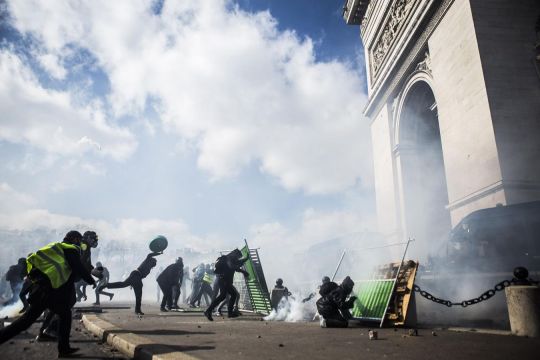
The year 2019 witnessed a new wave of uprisings on a planetary scale. Dozens of countries around the world watched as their cities erupted into violence, their economies were paralyzed, and the legitimacy of their governments was challenged in the streets. Despite obvious differences in context, the majority were popular mobilizations centering around common issues: worsening precarity, social regression and fiscal austerity – the result of several decades of unchecked liberalism. Added to this was the corruption of elites, the disrepute of the political class, and the authoritarianism of the State.
A common element in a majority of these cases is the collapse of institutional mediations. Many of these movements formed at arm's length from parties and unions — when they were not openly hostile toward them. In France, the skepticism of the Yellow Vests toward any form of representation is evident to anyone, while the more recent movement against the proposed pension reforms has crystallized a tendency among the more combative union bases of acting autonomously from their bureaucratic leadership. We see this at several levels: for instance, in their decisive insistence on December 5th as a strike date, in their will to take control of how the strike will be handled (i.e. a “renewable” rather than a “pearled,” or slowdown, strike), in their experimentation with more conflictual forms of action, and in their refusal to obey calls for a truce (even when they emanate from trade federations themselves).
The Yellow Vests phenomenon casts a stark light upon a basic feature of our time, namely, that traditional representative bodies are no longer in a position to capture the energy of protest, let alone direct it. From here on out, those who face down the State are on their own. From Paris to Santiago, by way of Beirut, popular revolt is shattering the recognized frameworks of struggle, fleeing in every direction. At a planetary level, its principal weapons are the blockade and the riot.
While this reduction of the antagonism to two terms may in some cases safeguard the people against the betrayals and intrigues of politicians and the various other apparatuses, it is no less problematic when one considers its long-term consistency and its possible outcomes — we will return to this later.
To be sure, several of the recent movements have succeeded in winning tactical victories: the abandonment of the new taxes at the root of the revolts in France and Lebanon, the suspension of the public transport fare hikes and the promise of a constitutional referendum in Chile, the abandonment of the austerity plan in Ecuador, the withdrawal of the extradition bill in Hong Kong, the resignation of Bouteflika in Algeria, etc.
States everywhere have bowed to popular pressure. Yet, with the exception of a few, the movements have kept going beyond these tactical achievements, and still continue today. In fact, it is this continuation, precisely, which reveals a major difficulty that cuts across every struggle in the current period: we have no shared conception today of what a victory might be, at either a tactical or a strategic level. (Insofar as a victory, in our view, is always the inscription in history of a point of irreversibility.)
We cannot see clearly what victory looks like. For us, the concept of victory is obscure.
By contrast, the twentieth century had at its disposal a relatively clear understanding of victory, one widely accepted by revolutionaries throughout the world. To be victorious meant to seize State power. This was to be done either by classic electoral means or else through an armed insurrection. Those “progressive” formations that came to power by respecting the rules of bourgeois democracy wound up either abandoning any prospect of social transformation, under the weight of institutional constraints or because of the intrinsic corruption of state structures, or else they found themselves vulnerable and powerless in the face of the reaction of the propertied classes and their imperialist allies. As for the revolutionary seizure of state power, historical experience has shown that, by itself, it in no way guarantees a general advance toward communism and that, consequently, a successful insurrection alone cannot define the concept of victory. (In other words, we cannot remain satisfied with a strictly “military” definition of victory.)
But we have not yet been able to put forward a new concept of victory adequate to the novelty of the movements that have shaken the world in recent years and which have everywhere run up against the same strategic impasses.

*
The question of victory is directly related to the question of organization. The determination of this or that hypothesis of victory leads us to adopt a certain type of organization adapted to the success of this hypothesis. Lenin’s theory of the vanguard party (endowed with military discipline and committed to the objective of taking state power) issues directly from his analysis of the failures of the revolutionary uprisings of the nineteenth century—foremost among them being the Paris Commune. Thus was he led to delineate a new type of political organization capable at last of leading the proletariat to victory. And if the Leninist party-form imposed itself as the canonical form of revolutionary organization during most of the 20th century, it is largely owing to the prestige derived from their 1917 victory. The hypothesis had, in a way, proven itself.
Designed for seizing state power, the Leninist party certainly showed its formidable insurrectional efficacy; however, it proved to be radically deficient in the exercise of this power when it came to the post-revolutionary phase and the achievement of the strategic objectives of communism. As Alain Badiou wrote, “The Leninist party is incommensurable to the tasks of the transition to communism, despite the fact that it is appropriate to those of a victorious insurrection.”
Throughout the 1970s, French Maoists and Italian autonomists had (among other things) counted the overcoming of the traditional Leninist paradigm among the essential tasks of the politics of emancipation. It is this problem that we have inherited today.
We cannot help but notice the general disorientation that runs through the whole of our camp on this issue. Whereas some have decided to sweep away the motif of organization completely, on the pretext that it is, in and of itself, synonymous with a mortifying alienation, others have been content to carry on with the ossified model of the avant-garde party. The former glorify the movement, and perhaps even pure movement itself, reducing their political practice to following each of its new figures. Although they often display remarkable tactical activism during sequences of acute conflictuality, their fetishization of an affinity-driven approach condemns them to retreating during non-movement periods. As for the latter, they remain rigidly loyal to obsolete organisational models, and this prevents them from truly entering into and becoming internal to the movements in question, leading to a growing disconnect with the new dynamics of struggle.
We believe that the problem of organization is once again an open question, one that demands to be taken up anew by revolutionaries. The Yellow Vests movement has been a formidable testing ground for the relationship between mass movement and organized subjectivity. For us, one of the essential lessons of this sequence is that activists must be in the movement “like fish in the water.” They must be truly internal, that is, actually in the movement. This means participating in its basic assemblies, establishing connections with its local groups, carrying out investigations, upholding its main deadlines, and allowing the novelty of its forms of struggle to “contaminate” them—in short, putting themselves in the school of the masses. They cannot remain content with a posture of exteriority, or even worse, of scorn, which was something too many leftists fell into at the onset of the 2018 winter uprising. As Marx put it in the Manifesto: “Communists everywhere support every revolutionary movement against the existing social and political order.” That being said, however, the position of revolutionary militants cannot be purely one of tailing or following along [suivisme], for it is not merely a question of accompanying the movement, or even of disappearing into it, but of intervening in it politically.
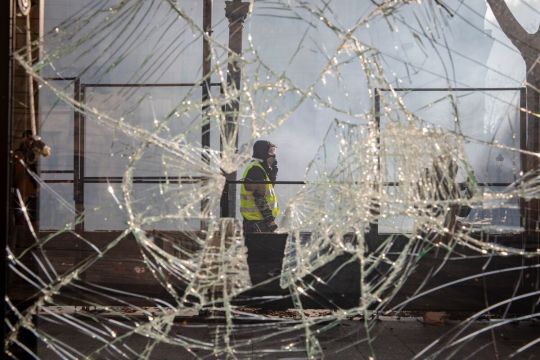
This brings us to the fundamental point: political intervention always leads to a division. What unites a movement, especially at the beginning, has a negative dimension: different sections of the people come together in common opposition to a particular government, a particular bill, a particular aspect of the dominant order. The follower mentality treats this unity as something to be preserved at all costs and regards any effort to introduce political divisions as tending to weaken the movement itself. On the contrary, we believe that the negative unity of a movement always covers up important (sometimes even antagonistic) contradictions and that it is precisely the role of revolutionaries to intervene where these contradictions exist—and thus, to accept the division. For it is only through this work of division that true, affirmative unity can be built.
This kind of work has been undertaken within the Yellow Vests movement, for example around the question of antifascism. There is no doubt that the presence of the extreme right, whether in terms of diffuse reactionary opinion or the violent activism of small groups, was notable at the beginning of the movement. Nationalist, neo-fascist, or Pétainist formations felt comfortable enough to unfurl their banners at the Étoile roundabout, to strut down the Champs-Élysées, to beat up leftist activists—until the brutal attack on an NPA contingent on 26 January 2019. The organization of an explicit antifascist response made it possible to rout these nationalist groupuscules, which were de facto excluded from the marches. At a deeper level, the early construction of an antiracist front bringing together organizations based in working-class neighborhoods such as the Adama Committee, local Yellow Vests groups, and various autonomous collectives allowed the contradictions of the movement to be worked on politically, helping to develop its watchwords and thereby gradually marginalizing its reactionary component.
It is also clear that the movement’s political maturation process was accelerated by an early collective experience of police and judicial repression (that is, of State authoritarianism) at levels that had previously been reserved exclusively for the racialized populations of working-class neighborhoods—yet which have now become the default mode of repression meted out to the entire social movement.
We argue that the task of organized militants during a movement is not only to provide tactical support for mass action but also to carry out a properly political intervention within the movement, which in most cases will entail a deepening of a certain number of its internal contradictions.
But if the organized must be sensitive to the irruptions of events (rather than obsessing over the maintenance and reproduction of their own organized process), getting organized does bring with it a duration proper to revolts by crystallizing their most advanced political contents. This other sense of time is what allows organized revolutionaries to continue the political work even in sequences of low conflictuality. They get organized by taking root in a territory; by opening and running accessible, public spaces; by establishing durable structures, spaces for self-education, and tools for propaganda and debate; and by deepening theoretical elaborations—in short, by practicing a militant program.
As Marx observed, since they capable of imagining the next stage of the political process, communists are not satisfied with following the pure present of revolts. In particular, they cannot be satisfied with a succession of tactical gestures (however spectacular) lacking any strategic interrelation. Here again we have detected a recurring weakness: although we, in France, have been living in a period of exceptional and almost uninterrupted social conflictuality since 2016, we have observed the fragmentation and the inconsistency of revolutionary organizations. A short-sighted “movement-ism” seems to be preventing any long-term recomposition.

*
The Yellow Vests movement has confirmed this: any politics of emancipation is today practiced at a distance from the State and its institutions. As a result, any organized process committed to emancipation can only be autonomous. The Yellow Vests have learned to rely on their own forces, they did not need any trade union or any political party to bring about a level of social antagonism unseen for over half a century. To borrow from Negri in his 1977 text, Capitalist Domination and Working Class Sabotage, it could be said that they combined a political destabilization of the regime (through the Saturday insurrectional riots) with the material destructuring of the system (through logistic blockades, the occupation of roundabouts and their territorial spread). Albeit in a fragmentary and incomplete way, they practiced larval forms of a popular counter-power.
This brings us back to the strategic considerations set out above. What do we mean by “counter-power?” Counter-power is the preliminary form of autonomy: it is both “liberated space,” a field of experimentation prefigurative of all other social relations, and “conflict zone,” a particular point where the reproduction of social command is blocked. Here positivity cannot be dissociated from negativity, nor creation from antagonism. For “the latencies of the future contained in the present are not limited to existing in ideological representations and political programs. On the contrary, they already manifest themselves in the eruption of the revolutionary process, externalizing themselves in the most surprising and unexpected configurations made possible by the successive puncturing of the dominant forms of relations,” as Curcio and Franceschini wrote in their 1982 text, Drops of Sunlight in the City of Specters.
To the extent that we must do away with the idea that nothing is possible prior to the conquest of central power; to the extent that the decline of the State must become not only an historical horizon but a principle visible in the present through political action itself—to this extent, counter-power is today the elementary reality of any emancipation process.
(France dotted with “yellow communes”—those occupied roundabouts and other innumerable pockets of self-organization which, in addition to the metropolitan riots, allowed thousands of proletarians to rediscover the meaning of fraternity while also laying the material conditions for a mass economic blockade—the France of last winter was undoubtedly a life-size approximation of this process of constituting, from below, an other power, a popular power that sets up its own institutions).
Whether one looks to the ZAD of Notre-Dame-des-Landes, or to the Yellow Vests themselves, recent experience shows that any dynamic of counter-power must confront the problem of self-defense and of protecting this counter-power. This issue is all the more pressing in the context of an authoritarian turn by the State whose repressive methods have become increasingly unhinged. We must likewise consider the possible forms in which a strategic (and not only tactical) negativity might be exercised—one committed to the destruction of bourgeois law, that foundation of the dominant order, a destruction that the capillary expansion of counter-power alone cannot ensure.
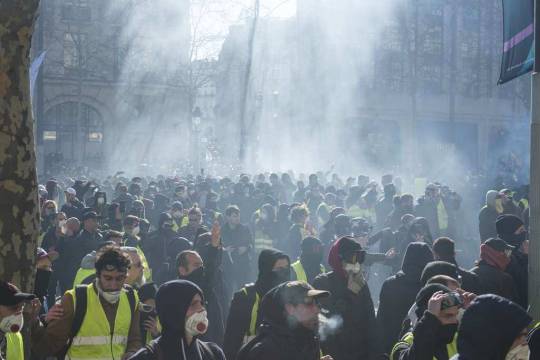
What then are the stakes of putting the question of organization back on the agenda? It is clear that only historical practice will allow us to make real progress on this issue. And that theoretical elaboration can only serve—but this is already a lot—to formulate problems.
We must get organized in the field of self-defense, which likewise determines offensive capacity. In this sense, to borrow an intuition from Tronti, it is a tactical function of mass antagonism. For, as we have said, the accumulation of popular power necessarily runs up against the “prohibitive power” of the State. Once it reaches a certain threshold of strength and temporal consistency, every emancipatory experiment confronts this “prohibitive power” that puts its very survival at stake. To envisage this as a linear process would be the height of naivety. Here is precisely where the role of organized political subjectivity lies: to “remove the obstacles” that oppose the growth of popular power, to break up the enemy’s command structure: “to strip capitalist domination of its hope, its possibility of a future,” as Scalzone put it in 1978. It is unclear, otherwise, how the emancipatory elements that developed “in the womb of the old society” could ever in fact be actualized, ratified, and generalized.
But this function alone does not exhaust the issue. Another essential aspect of any organizational process is its multiplicity. It cannot be “one dimensional.” This was, moreover, the principal error of the fighting formations in the 1970s cycle: the military function ended up absorbing all the others, reducing the specter of political practice to this one partial dimension. On the contrary, the organized must seek to combine and articulate different forms of struggle, different terrains, and different modes of intervention. As one agent of the Imaginary Party pointed out, “People forget, but the party has always been both legal and illegal, visible and invisible, public and conspiratorial.” Its richness and potentiality reside in this plurality.
Organization must therefore also take on the role of political recomposition. Today, there are a variety of trajectories of struggle in the movement that act on specific terrains and claim relative autonomy. This is the case, for example, of feminist and antiracist movements (which are themselves traversed by major fault lines). The question of organization, at present, is therefore just as much a question of organizations. Hence the motif of the front that has been circulating recently, which is one possible form that this recomposition could take. What would be at issue is a space necessarily open to internal contradictions, within which revolutionary militants would have the task of working toward a determinate programmatic synthesis: to foster connections between centers of struggle and different social subjectivities, to thwart the risk of paralysis or fragmentation by affirming a communist projectuality as an evaluative criterion for real situations.
Since 2016, and more intensely in recent months, egalitarian alliances have been formed between combative union chapters, autonomous collectives, local Yellow Vests groups, working-class neighborhood organizations, radicalized ecological militants, and high school bases — our task today is to ensure that these alliances survive beyond mere movement temporalities, that is, to build a space of organization and coordination that might create the bases for a new type of popular unity.
[Photo credits: Maxwell Aurélien James, for the Collectif ŒIL]
20 notes
·
View notes
Text
Choosing the right tactical torch
In recent years, tactical flashlight has become an essential tool for firefighter and military safety professionals.
Some flashlights are also used more and more as a means of self-defense by the armed forces.
Moreover, with the popularization of LED technology, a tactical flashlight's power can easily dazzle an individual.
So how do you choose the right tactical flashlight?
Here is our buying guide presenting, in our opinion, the important criteria to take into account when buying your flashlight:
The power of your flashlight
This criterion will depend on your activity and the use you want to make of your flashlight.
A flashlight of at least 800 lumens is considered powerful!
Use this type of powerful flashlight for any outdoor activity, trekking, hiking, research, walks in the forest for hunters ...
For defense trades, a powerful flashlight of at least 800 lumens will temporarily blind an individual.
The size of your tactical flashlight
Again this will depend on your needs.
Although a torch or tactical flashlight is often compact in size, a police officer or gendarme will choose their tactical flashlight so that it is long enough to protrude from the fist and thus allow the edges to be used for striking in a situation of attack or self-defense for individuals.
So an ideal tactical flashlight is not too big and not too long, with the palm of your hand for reference.
The different modes of your tactical flashlight
Some tactical flashlights offer different lighting modes, including the very popular "Strobe" or "Strobe."
Once the stobe mode is activated, your flashlight will flash very quickly and at full power.
Widely used by the American military to dazzle and disorientate the adversary on the ground.
Most tactical lights offer this lighting mode by simply double pressing or pressing a specific switch.
What is the difference between a flashlight and a tactical flashlight?
In general, a flashlight is tactical when its activation switch is located at its base so that it can be operated with the thumb only.
A tactical flashlight is often compatible with a firearm. The compatible tactical flashlight models that attach to a weapon (rifle, rifle, or pistol) make it possible to illuminate the target area in dark environments during delicate interventions by special armed forces such as the GIGN shooters sportsman wishing to train in low light situations.
A tactical torch for the weapon is also sold with its remote activation switch, allowing you to keep your hands on your weapon and activate your tactical flashlight with the touch of a finger.
As you can see, the flashlight is more "classic" and made for more urban and general public use.
Its size can characterize it, more or less, depending on the desired use, like the Maglite ML300, for example, or more compact like the Mini Maglite, also called a flashlight. Today, the compact torch often has the allure and shape of
The mode of your flashlight
We recommend choosing a torch with different adjustable intensity modes.
Thus, it is always more pleasant to select the low-intensity function to observe objects at a short distance.
You will be able to read a book without being dazzled.
The light intensity mode also greatly affects the autonomy of your batteries. The more your tactical flashlight is in power mode, the faster the batteries will be consumed.
Fortunately, there are models of flashlights and rechargeable tactical lights!
A waterproof flashlight or not?
The waterproofness is another very important criterion which will depend on the conditions under which you will need your tactical flashlight.
The IPX6 code categorizes a rain-resistant flashlight.
The IPX8 code signifies the total water tightness underwater turn.
The autonomy of your tactical flashlight
Important detail! Note that a tactical flashlight's maximum autonomy is often estimated and given as an indication for a low light mode.
Thus, if you use your torch in maximum mode, the autonomy will be much less than what is announced on the product sheet!
If you opt for a standard non-rechargeable torch model, be aware that some lamps are rechargeable, such as the Maglite "Charger," for example.
Autonomy is, therefore, an important factor to take into account, depending on your needs.
If you plan to spend several hours outdoors, we recommend that you use an LED torch (which does not heat up) with a rechargeable battery and with adjustable power mode.
Extreme Conditions offers a wide choice of a flashlight, tactical flashlight and flashlight for both occasional users (for domestic work) and professional (cavers, boating, police, firefighters, security, military, etc.)
Our customer service is also available for any additional questions about the adventure equipment.
1 note
·
View note
Text
Choosing the right tactical torch
In recent years, tactical flashlight has become an essential tool for firefighter and military safety professionals.
Some models of flashlights are also used more and more as a means of self-defense by the armed forces.
Moreover, with the popularization of LED technology, a tactical flashlight's power can easily dazzle an individual.
So how do you choose the right tactical flashlight?
Here is our buying guide presenting, in our opinion, the essential criteria to take into account when buying your flashlight:
The power of your flashlight
This criterion will depend on your activity and the use you want to make of your flashlight.
A flashlight of at least 800 lumens is considered powerful!
Use this powerful flashlight for any outdoor activity, trekking, hiking, research, walks in the forest for hunters ...
For defense professions, a powerful flashlight of at least 800 lumens will temporarily blind an individual.
The size of your tactical flashlight
Again this will depend on your needs.
Although a flashlight or tactical flashlight is often compact, a police officer or gendarme will choose their tactical flashlight so that the latter is long enough to protrude from the fist and allow the edges to be used for striking in a situation of attack or self-defense for individuals.
So an ideal tactical flashlight is not too big and not too long, with the palm of your hand for reference.
The different modes of your tactical flashlight
Some models of tactical flashlights offer different lighting modes, including the very popular "Stroboscope" or "Strobe."
Once the stobe mode is activated, your flashlight will flash very quickly and at full power.
They were widely used by the American military to dazzle and disorientate the adversary on the ground.
Most tactical lights offer this lighting mode by merely double pressing or pressing a specific switch.
What is the difference between a flashlight and a tactical flashlight?
In general, a flashlight is tactical when its activation switch is located at its base so that it can be operated with the thumb only.
A tactical flashlight is often compatible with a firearm. The compatible tactical flashlight models that attach to a weapon (rifle, rifle, or pistol) make it possible to illuminate the target area in dark environments during delicate interventions by special armed forces such as the GIGN shooters sportsman wishing to train in low light situations.
A tactical torch for the weapon is also sold with its remote activation switch, allowing you to keep your hands on your gun and activate your tactical flashlight with the touch of a finger.
As you will have understood, the torch is more "classic" and made for more urban and general public use.
Its size can characterize it, more or less extensive, depending on the desired use, like the Maglite ML300, for example, or more compact like the Mini Maglite, also called a flashlight. Today, the compact torch often has the allure and shape of
The mode of your flashlight
We recommend choosing a torch with different adjustable intensity modes.
To observe objects at a short distance, it is always more pleasant to select the low-intensity function.
You will be able to read a book without being dazzled.
The light intensity mode also dramatically affects the autonomy of your batteries. The more your tactical flashlight is in power mode, the faster the batteries will be consumed.
Fortunately, there are models of flashlights and rechargeable tactical lights!
A waterproof flashlight or not?
The waterproofness is another fundamental criterion which will depend on the conditions under which you will need your tactical flashlight.
The IPX6 code categorizes a rain-resistant flashlight.
The IPX8 code signifies the total water tightness underwater turn.
The autonomy of your tactical flashlight
Important detail! Note that a tactical flashlight's maximum autonomy is often estimated and given as an indication for a low light mode.
Thus, if you use your torch in full mode, the autonomy will be much less than what is announced on the product sheet!
If you opt for a standard non-rechargeable flashlight model, be aware that some lamps are rechargeable, such as the Maglite "Charger," for example.
Autonomy is, therefore, an essential factor to take into account, depending on your needs.
If you plan to spend several hours outdoors, we recommend using an LED torch (which does not heat up) with a rechargeable battery and adjustable power mode.
Extreme Conditions offers you a wide choice of a flashlight, tactical flashlight, and flashlight for both occasional users (for domestic work) and professional (cavers, boating, police, firefighters, security, military, etc.)
Also Read: https://outsideneed.com/best-rechargeable-flashlight-under-50
1 note
·
View note
Link
“The City of Oakland Slow Streets Program is intended to support safe physical activity by creating more space for physical distancing for all Oaklanders by declaring that all existing and planned Neighborhood Bike Routes are Closed to Through Traffic so that people can more comfortably use these low-traffic streets for physically distant walking, wheelchair rolling, jogging, and biking all across the City. These account for nearly 10% of all Oakland streets.
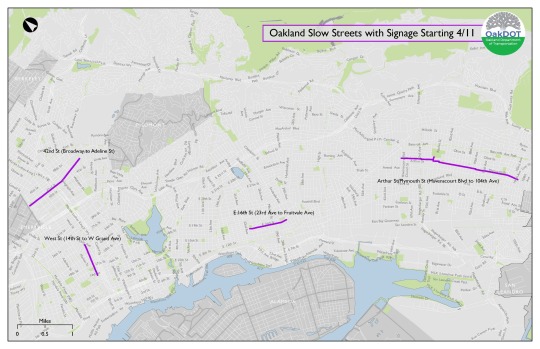
“This program will start with a pilot effort launching Saturday, 11 April 2020 with signage along the following four street segments (updates will be posted here):
West St: West Grand – 14th Street
Arthur St: Havenscourt Blvd – 78th Ave, connecting to Plymouth St: 78th – 104th Avenue
E 16th St: 23rd Ave/Foothill Blvd – Fruitvale Ave
42nd St: Adeline – Broadway

42nd st/shafter ave
“This program is also intended to discourage drivers from using Neighborhood Bike Routes unless necessary to reach a final destination, and urges all drivers to drive slowly and safely, expect to see people walking and biking along ALL streets, as our hospitals are facing unprecedented challenges and don't need any additional patients. This effort does not impact emergency vehicle access in any way.

plymouth/98th ave
“Oakland Slow Streets does the following:
Declare "Road Closed to Through Traffic" on Planned and Existing "Neighborhood Bike Routes” for the Duration of the Emergency or until otherwise indicated by the City of Oakland. (74 miles, nearly 10% of Oakland streets; see map on this page.) Note: these streets are not closed to emergency vehicles or local traffic that must use these streets to access a final destination.
City Provided Signage/Barricades at Key Locations. At selected locations, such as intersections with arterial streets, post closure signage. The City will prioritize posting signage on routes in underserved communities.
Promote Physically Distant Physical Activity. With nearly 10% of City streets identified as closed to through traffic, residents can safely distance themselves from neighbors when walking, jogging, and biking along these streets. Always maintain at least 6 feet of space from others.
Amplify the City’s Capacity with Partners. Work with community organizations and civic leaders to complement City-led interventions – communications and outreach, additional signage, evaluation, and potential community-designed traffic calming ("tactical urbanism"); building up participation over time, subject to observation/evaluations.
Measure Impact and Modify Overtime. Our cities are adapting faster than ever before due to COVID-19. The program plans to evaluate the efficacy of our efforts overtime and make any relevant adjustments.”

42nd st/telegraph ave
more info: oakland slow streets.
3 notes
·
View notes
Text
Hey, Big Guy
by Darkrealmist
Ushijima Gonta is having a rough day, being criticized for his weight. Hoshikawa Subaru takes it upon himself to bring him back to positivity.
Words: 494, Chapters: 1/1, Language: English
Fandoms: 流星のロックマン | Mega Man Star Force, Rockman | Mega Man - All Media Types, Marvel Cinematic Universe, The Avengers (Marvel Movies), The Avengers (Marvel) - All Media Types, Disney - All Media Types, Scooby-Doo! (Live-action Movies), Scooby Doo - All Media Types, Futurama
Rating: General Audiences
Warnings: No Archive Warnings Apply
Categories: Gen, M/M
Characters: Hoshikawa Subaru | Geo Stelar, Ushijima Gonta | Bud Bison, Warrock | Omega-Xis, Shirogane Luna | Luna Platz, Saishoin Kizamaro | Zack Temple, Hibiki Misora | Sonia Strumm, Hoshikawa Akane | Hope Stelar, Shooting Star Rockman | Star Force Mega Man, Ox | Taurus, Bruce Banner, Natasha Romanov (Marvel), Daphne Blake, Sarah Michelle Gellar, Bender Rodriguez
Relationships: Hoshikawa Subaru | Geo Stelar/Ushijima Gonta | Bud Bison, Bruce Banner/Natasha Romanov
Additional Tags: Acceptance, Adventure, Adventure & Romance, Affection, Affectionate Insults, Aged-Up Character(s), Alternate Universe - Canon Divergence, Alien Character(s), Aliens, Ambushes and Sneak Attacks, Anime, Anger, Angst, Angst and Feels, Angst and Humor, Angst and Hurt/Comfort, Arguing, Asian Character(s), Assault, Astronomy, Bad Days, Bad Ideas, Belonging, Bickering, Bisexual Character, Bisexual Character of Color, Bisexual Male Character, Body Image, Bonding, Boundaries, Boyfriends, Boys In Love, Boys' Love, Bromance, Bromance to Romance, Canon Bisexual Character, Canon Character of Color, Character(s) of Color, Childhood Friends, Childhood Memories, Children, Chinese Food, Clinging, Comedy, Comfort, Complete, Confusion, Constellations, Cooking, Cross-Posted on FanFiction.Net, Crack, Crack Relationships, Crack Treated Seriously, Criticism, Cruelty, Cultural References, Cute, Cute Ending, Cute Kids, Dating, Declarations Of Love, Devotion, Dinner, Double Entendre, Eating, Elementary School, Embarrassment, Emotional, Emotional Baggage, Emotional Hurt, Emotional Hurt/Comfort, Emotions, Endearments, Enemies, Enemies to Friends, Enemies to Friends to Lovers, Established Relationship, Evil Laughter, Explanations, Family, Family Feels, Family Fluff, Fanfiction, Fanservice, Fantasy, Fast Food, Fat Shaming, Fear, Feelings, Feels, Female Character of Color, Female Protagonist, Fights, First In The Fandom, Flashbacks, Fluff, Fluff and Humor, Fluffy Ending, Food, Food Issues, Food Metaphors, Frenemies, Friendship, Friendship/Love, Friends to Lovers, Fun, Funny, Futurama References, Future Fic, Glasses, Growing Up, Hamburgers, Happy, Happy Ending, Harassment, Heroes & Heroines, High School, Hijinks & Shenanigans, Hong Kong, Humiliation, Humor, Hurt, Hurt/Comfort, Hybrids, Idols, In-Jokes, Inspired by Art, Inspired by Real Events, Insults, Intervention, I Wrote This on Bronchitis Medicine, Japanese Character(s), Japanese Culture, Joyful, Laughter, LGBTQ Character of Color, Light-Hearted, Love, Love Stories, Loyalty, Machines, Male Antagonist, Male Bonding, Male Character of Color, Male Protagonist, Male Slash, Marvel References, Metaphors, Minor Canonical Character(s), Minor Character(s), Mischief, Mother-Son Relationship, Music, Musicians, Nervousness, Nicknames, Nostalgia, One Shot, Originally Posted Elsewhere, Originally Posted on FanFiction.Net, Partnership, Personal Growth, Pet Names, Phone Calls & Telephones, Plans, Possessive Behavior, Post-Canon, Protectiveness, Puns & Word Play, Queer Youth, Rare Characters, Rare Fandoms, Rare Pairings, Recommendations, References to Canon, Reminiscing, Restaurants, Returning Home, Rock Stars, Romance, Romantic Comedy, Romantic Fluff, Romantic Gestures, Sad, Sappy, Sappy Ending, Sarcasm, Saving the World, Scary, Science Fiction, Science Fiction & Fantasy, Scheming, Scooby Doo References, Schoolboys, Second-Hand Embarrassment, Secret Identity, Secrets, Self-Acceptance, Self-Esteem, Self-Esteem Issues, Shame, Short, Short & Sweet, Short One Shot, Shounen-ai, Shout-outs, Singing, Slash, Social Anxiety, Social Issues, Strategy & Tactics, Sweet, Team, Team Bonding, Team Dynamics, Team Feels, Team Up, Teasing, Technology, Teenagers, Teen Angst, Teen Romance, Threats, Transformation, Understanding, Unexpected Visitors, Urban Fantasy, Warm and Fuzzy Feelings, Watching, Weight Issues, Wordcount: 100-500, Wordcount: 500-1.000, Wordcount: Under 10.000, Worry, Young Love, Ficlet
read it on the AO3 at https://ift.tt/2YhkiMh
2 notes
·
View notes
Text
“Provisional Green Space” Bert Theis at AVTO, Istanbul. A review.

Taking the narrow steps down from street level into AVTO -occupying the basement of a building in the Genoese quarter of Galata- you get a sense of space expanding in front of you. A large-scale photomontage is laid covering the whole floor, multiplied by the gallery’s eminent mirror walls. The imagery employed here by the late Milanese artist Bert Theis (1952-2016) is that of the jungle, an image of re-wilding; of feral forests taking over the built environment, as a metaphor for life against design. The common post-apocalyptic trope of “non-human life taking over the city” is utilized to provoke a sense of resistance-as-potential.
The desire to mobilize desire against the brute operational forces of capital (in the shape of real estate development), runs wide among artists and activists in the urban context. This exhibition of Theis's work, curated by Angelo Castucci (in collaboration with Isola Utopia - a continuation of Theis’s Art Center project) tells the story of the Isola district in Milan, and Theis’s engagement in the struggle process during its reconstruction as the new ‘design neighborhood’. As a city with its share of similar urban struggles in the last decade and more, the questions presented in the exhibition are still vital for Istanbul. Even at a time when most struggle appear to have been subsumed (or suppressed).
This not-so-hi-res bird’s eye view of Isola, as inhabited by a seemingly uncontrollable forest, serves as the basis of the artist’s imaginary in the fight against that (now globally familiar) story: how certain big chunks of cities are taken over by large-scale real estate developments, with tag-lines such as 'art' and 'design' districts. In the gallery, a few mats are thrown above this image-surface asking you to lay down and browse the books provided on the story of the Isola Art Center project that Theis directed from 2001 through to 2009. A dreamy soundtrack for this setting, representing the “aggloville”; a compact mass of flora and fauna plays discretely. Meanwhile, in a dark back-room the video “Isola Nostra” by Mariette Schiltz and Bert Theis, a documentation of the struggle as well as the multifarious exhibitions and art interventions at Isola, demands a full hour.
The exhibition feels fixed on a particular moment, introspecting on the resistance, the imagination and desire towards an art center to overcome the pressures of gentrification (or rather destruction) in massive scale. Yet it does not reveal much of the tragic (or expected) ending of Isola Art Center, when the building and its surrounding were evacuated and demolished. A second chapter to such a narrative feels imperative, considering that rather than let plants (and life) take over and occupy the space, the real-estate developers invited the architect Stefano Boeri to design the ‘Bosco Verticale’, a residential tower titled 'vertical forest', which employs the exact same trope of flora overtaking the built environment, albeit for a high-end clientele. The irony hurts.
“They offered [the craftspeople] money to make them go away, and many went away. And then there were some associations here, who split the movement, they were offered other spaces - alternative spaces - so last week they moved out. Now we have the problem that here downstairs some spaces are squatted by … drug dealers.” When you read Bert Theis speaking from 2007, in the accompanying interview publication, you can’t help but notice a feeling of being left alone, in Isola (meaning Island), as opposed to the request for being left to one’s own devices, as a community of inhabitants, human and non-human. This resonates with the tension in the name of the space that is now hosting the story of Isola here in Istanbul. One can’t help but think that in Turkey, the words gallery and gallerist are commonly used for automobile dealerships, while “avto” also clearly nods towards a desired autonomy.
AVTO is a not-for-profit space run by a young artist-curator collective, now programming their second season, in a very central part of Istanbul that has been undergoing drastic cultural changes and turmoil via both real estate investments and commercial use for a good 20 years. The Galata area, which was for a while under the scrutiny of the critics of gentrification, seems like it’s renegotiating with its fluctuating and confused inhabitants, now composed of an even more complex mix of local day-tourists, a shrinking body of craftspeople, immigrants, few affluent residents, seagulls, feral cats and a lessening number of European visitors including young Erasmus-folk. After all, not all ‘plans’ work in forming and transforming a city.
This underground mirror chamber of a gallery now acts as the site for such indirect commentary, on both it’s own place in a city and a country subjected to similar top-down attitudes towards the way a city, or even a society can be formed. Bert Theis and Isola show us how one’s utopia becomes another’s dystopia, and vice versa. The tactical existence of Isola is well-documented in a publication by Archive Books titled “Fight-Specific Isola”, with a pun on site-specificity. Yet no site seems that specific, and in all such sites the fight seems to be in dire need of strategy, as much as its love of tactics; and to reconsider ‘closures’ to build upon, as much as it loves open-endedness.
Can Altay, November 2018
1 note
·
View note
Text
Vorax open world survival gives you a first look at gameplay

Vorax new survival horror gameplay trailer for the upcoming game on Linux and Windows PC. Thanks to the warped but uniquely creative minds of developer IndieGala. Due to make its way onto Steam this winter.
Independent publisher IndieGala is announcing the new video for Vorax. Which is their upcoming climactic open world survival horror game. Which is both creepy and offers some really weird stuff in this game.
Vorax take place on a Mediterranean island, where a mysterious pathogen has infected the local population. So, as part of a NATO special intervention team, you have been sent to the island. Due to search out what is actually happening.
Vorax. Sewers. Gameplay
youtube
In Vorax you will craft tools, build barricades, and construct traps. All while you upgrade, and maintain your shelter to survive. Since it rests on your shoulders to uncover the dark origins of the virus. As well as its horrible mutating effects. How long can you survive on the island? And how long can you stay alive when being hunted by hungry creatures?
Features:
A Large and Detailed Game setting
Urban areas, sewers, caves, and various different areas to explore
Unique enemies with different attack patterns
A unique and realistic tactical helmet with military HUD
Building barricades, fences, and traps. So you can fortify the base in Vorax.
Craft tools and weapons
hunting and cooking food
Treat wounds and other injuries
Wide array of both conventional and non conventional weapons
A day night cycle and dynamic weather
Unique stress and sleep mechanics
Additional Information
Vorax dark settings offer a murky feel, which is usually the case in survival horror games. But I'm keen to see what further content and features developer IndieGala plan to include. And for a sandbox game, I'd really like to see some sort of co-op gameplay.
Obviously the game is not due to release until Winter via Steam. Coming to both Linux and Windows PC. This should also work for all you Steam Deck owners. So be sure to Wishlist the game now.
0 notes
Text
Enhance Road Safety With Tactical Urbanism Trials
The aim of this initiative is to improve road safety. Save Life Foundation is currently testing tactical urbanism trials, temporary design interventions to improve safety for pedestrians, cyclists, and other road users. Tactical Urbanism trials are temporary, quick, and low-cost interventions, which test out urban design, transportation planning and infrastructural changes for improving road safety.
0 notes